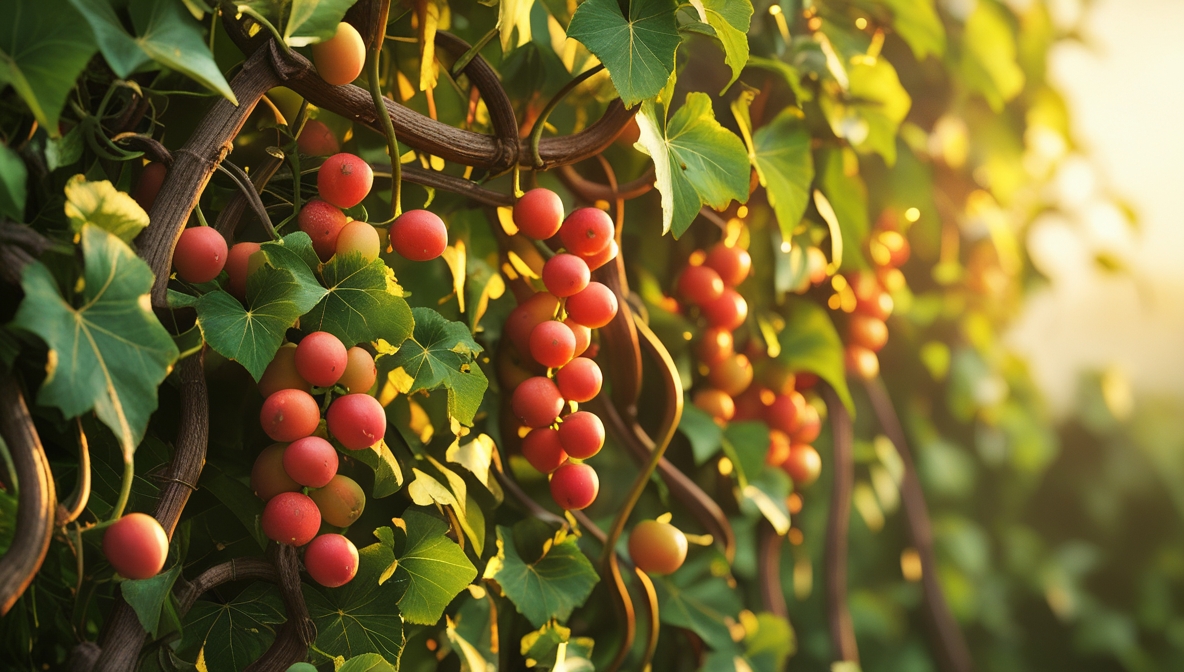The Vine and the Branches (John 15:5)
You’ve probably heard the phrase “The Vine and the Branches” before, but when you sit with John 15:5, you discover it’s not just a nice image — it’s the heartbeat of your spiritual life. In the Gospel of John, Jesus uses the vine and branches to explain how essential the connection to him is for growth, fruitfulness, and endurance. This article unpacks that metaphor so you can live it out. If you’re preparing a sermon, reflecting personally, or leading a small group, this deep dive will help you bring clarity and practicality to “The Vine and the Branches sermon.”
Read the key verse in context here: John 15:5.
Why this image matters to you
The vine-and-branches image matters because it addresses a basic human need: belonging and dependence. You weren’t designed to be spiritually autonomous. Jesus is saying, in effect, that your life as a follower flows from your relationship with him. If you’re searching for meaning, direction, or power to live faithfully, this metaphor gives you a simple, tangible framework: stay connected to the Vine.
Context: John 15 in the Upper Room Discourse
The setting behind the metaphor
John 15 is part of Jesus’ farewell teaching to his disciples in the Upper Room, the same discourse that includes promises, commands, and warnings. He’s preparing them for his departure and wants them to understand how they’ll remain spiritually alive and effective. Read the whole passage for context: John 15:1-8.
How John frames “abide” and the relationship
In this chapter, Jesus uses the word “abide” (or “remain”) repeatedly. That repetition isn’t accidental; it’s the key action you’re called to as a disciple. Abiding means relationship, not mere behavior modification. The term carries the idea of dwelling, living in, and drawing life from the Vine. See the emphasis here: John 15:4.
The imagery: vine, branches, gardener
Vine and branch roles explained
Jesus identifies three players: the Vine (himself), the branches (you and other followers), and the gardener (the Father). Each role explains something vital about how spiritual life functions. The Vine supplies life; the branches receive and carry that life; the gardener tends and prunes. This structure helps you see that Christian growth is relational and cultivated, not produced by sheer willpower alone. The basic declaration is here: John 15:5.
Old Testament roots of the image
The vine metaphor has deep roots in Israel’s story, used earlier in the prophets to describe God’s care and Israel’s response. Isaiah’s vineyard song is a vivid example that helps you understand both divine expectation and human failure: Isaiah 5:1-7. Seeing the continuity between Testaments will deepen how you preach or apply this passage.
Abiding: what it looks like in daily life
Abiding is relational, not ritualistic
When Jesus says “remain in me,” he’s calling you into an ongoing relationship. That means your Christian life isn’t primarily about checklist religion but about sustained, living union with Christ. Abiding shows up in prayer, Word-saturated thinking, dependence in trials, and obedience as a response to love. To see Jesus’ command tied to love and obedience, read: John 14:15.
Practically practicing abiding
Abiding involves habits that cultivate connection: regular Bible reading, honest prayer, silence to listen, remembering Christ in the sacraments, and fellowship with other believers. Colossians gives you a posture to lean into: walking rooted and built up in him as you were taught: Colossians 2:6-7. These aren’t magic formulas, but they are faithful means by which the Vine’s life flows into you.
Fruitfulness: what you can expect when you abide
Fruit is the natural outcome of connection
Jesus doesn’t demand fruit apart from connection; he promises it as a result of abiding. If you’re attached to the Vine, life issues forth naturally: character shaped, mission empowered, witness clarified. The goal isn’t scoreboard-driven performance but the outworking of life that reflects Jesus’ life. Jesus expresses this promise with clarity: John 15:8.
Types of fruit you’ll recognize
Fruit can be personal maturity (Christlikeness), fruitful relationships (making disciples), and spiritual effectiveness (service and witness). Galatians gives you a language for the internal fruit that grows when you abide: love, joy, peace, patience, kindness, goodness, faithfulness, gentleness, and self-control — the Spirit’s work within you: Galatians 5:22-23. When the Vine’s life is in you, these qualities will increasingly show up.
Pruning: why God cuts back and what that means for you
Pruning is part of the growth process
Jesus says the gardener prunes the branches so they will bear more fruit. Pruning can feel painful, but it’s designed to produce abundant life. When the Father trims excess or redirects your focus, it’s not a punishment but purposeful care. You can trust the gardener’s skill and love even when the process is uncomfortable. See the teaching here: John 15:2.
How to respond to pruning as a disciple
You respond to pruning with humility, openness, and patience. Ask God what he’s doing rather than assuming you’re being abandoned. Look for the lessons the trimming is teaching—greater dependence, simpler rhythms, clearer priorities. Over time, pruning produces deeper roots and more vibrant fruit, even if the season is hard.
The warning: being cut off
The seriousness of disconnection
Jesus doesn’t romanticize the image; he warns about the reality of fruitless branches being gathered, thrown away, and burned. Disconnection leads to spiritual death and judgment. This stark warning should motivate you to examine your connection to Christ and not take abiding for granted. Read the sobering warning: John 15:6.
How to know if you’re at risk
You might be at risk of being cut off if your life shows persistent fruitlessness, indifference to God, or unrepentant sin. These are indicators not meant to condemn you but to prompt immediate return to the Vine through repentance, prayer, and active re-commitment. The Gospel offers grace for restoration; don’t wait to reconnect.

Theological layers: union with Christ and sanctification
Union with Christ as the foundation
“The Vine and the Branches sermon” will often point people to the doctrine of union with Christ. This doctrine teaches that your identity and spiritual resources are found in Christ’s person and work. You are not merely a friend of Jesus; you are united to him in a living, sustaining relationship. Scripture repeatedly affirms this union as the ground of all Christian life and hope; see the broader New Testament pattern in Paul’s teaching: Colossians 2:6-7.
Sanctification as cooperative growth
Sanctification is the process by which you become more like Christ — and it presumes your abiding. God’s Spirit works through your cooperation with grace. That means you strive, pray, repent, and receive strength from the Vine as you grow. The relationship precedes and empowers the effort.
Pastoral implications: preaching The Vine and the Branches sermon
Preaching with balance: grace and call
When you preach “The Vine and the Branches sermon,” hold together two truths: the proclamation of grace and the call to faithful discipleship. Avoid reducing the message to either works-righteousness (you must produce fruit by effort) or cheap grace (no need for connection or obedience). Help your listeners see how grace enables abiding and how abiding leads to fruit.
Sermon structure suggestions
If you’re preparing a sermon, structure it around clear components: context (what Jesus was addressing), exposition (explain the vine imagery verse by verse), pastoral application (what does abiding look like for your people), and practical steps (how to abide this week). Use illustrations that are accessible — gardening, athletics, or family life — to make the truth stick.
Practical disciplines that help you abide
Spiritual practices that nurture connection
You’ll grow more connected to the Vine by cultivating regular spiritual practices: reading Scripture, structured prayer, confession, Eucharist/Communion (if your tradition observes it), solitude, and shared worship. These habits create repeated moments where the Vine’s life meets yours. Hebrews urges you not to neglect meeting together: Hebrews 10:24-25.
Community and accountability
Abiding rarely happens in isolation. You need people who will help you stay connected — friends who pray for you, leaders who teach you, and a church that encourages fruit-bearing. The Christian life is communal by design; the branch doesn’t thrive disconnected from the vine or its fellow branches.
Obstacles to abiding and how to overcome them
Common barriers you might face
Barriers like busyness, doubt, sin, discouragement, and self-reliance can choke your connection to the Vine. Each of these redirects your attention away from Jesus, leaving you spiritually depleted. Recognizing the barrier is the first step toward restoration.
Overcoming obstacles through confession and renewal
Deal with barriers by returning to the basics: confess what’s broken, ask for help, simplify your rhythms, and re-center your life around Christ. The Psalms model honest lament and dependence; you can bring your doubts and tiredness to God and ask for renewed sight and strength.
Misconceptions about “fruit” and “works”
Fruit is not only outward success
One misconception is that fruit equals outward success or measurable achievements. In Jesus’ economy, fruit is primarily about Christlike character and effective witness, not merely program growth or personal comfort. Reassess your metrics of success through the lens of Christ’s priorities.
Works don’t save you, but transformed living follows true faith
Another misconception is confusing justification and sanctification. You’re not saved by your fruit; salvation is by grace through faith (see: Ephesians 2:8-9). Yet genuine faith produces fruit. True union with Christ results in changed life, which will be evident to others.
Application for leaders: how to lead people to abide
Creating environments that foster abiding
As a leader, you can shape rhythms and structures that encourage abiding: teaching the Word, facilitating small groups, modeling spiritual practices, and creating opportunities for intentional discipleship. Help your people move from information to integration.
Coaching people through seasons of pruning
When people go through pruning, shepherd them with patience. Offer spiritual counsel, practical support, and biblical hope. Remind them that pruning often precedes greater fruitfulness and that God is working to deepen their roots.
Personal reflection questions for your life
Questions to help you examine your connection
Take time to ask yourself: How would I describe my current connection to Jesus? What habits help me abide, and which ones hinder it? Where have I resisted pruning and what might God be trimming in me now? Honest self-inquiry prepares you for growth.
Questions for group discussion or sermon response
If you’re in a small group or preparing discussion notes for “The Vine and the Branches sermon,” consider: What fruit have you seen in your life lately? How can the group support each other in abiding? What practical step will you take this week to deepen your connection to Christ?
Illustrations and stories you can use in a sermon
Simple, relatable images
Good illustrations help people feel the truth. Use gardening—how a vine produces fruit only when supported and pruned—to show that God’s work looks like tending. Athletic training is another metaphor: the athlete who trains with a coach grows stronger; the Christian trains in spiritual disciplines with the Holy Spirit’s help.
Personal testimonies
Encourage real-life testimonies during your message or group: a person who learned to pray through struggle, someone who bore fruit after a season of pruning, or a church that shifted focus from programs to discipleship. Stories of grace make doctrine lived and believable.
Living the message daily
Integrating the Vine into your routine
You can live “The Vine and the Branches sermon” daily by choosing one abiding habit this week — a morning scripture-and-prayer time, a weekly fellowship commitment, or a short sabbath practice. Start small and let the Vine’s life grow you steadily.
Trusting the gardener
Finally, rest in the truth that the Father is an attentive gardener. He prunes, protects, and provides. Your calling is to dwell in Christ, trust the process, and bear fruit for his glory. The promise and the invitation are both sure: remain in Jesus, and you will not be alone in your spiritual journey.
Closing prayer and benediction
Pause now for a short prayer: ask God to deepen your connection to Christ, to make you receptive to pruning, and to produce fruit that reflects Jesus’ character. Pray for humility to receive correction, strength to persevere, and joy in the Vine’s presence. Let this be your daily posture: dependence, gratitude, and obedience.
Explore More
For further reading and encouragement, check out these posts:
👉 7 Bible Verses About Faith in Hard Times
👉 Job’s Faith: What We Can Learn From His Trials
👉 How To Trust God When Everything Falls Apart
👉 Why God Allows Suffering – A Biblical Perspective
👉 Faith Over Fear: How To Stand Strong In Uncertain Seasons
👉 How To Encourage Someone Struggling With Their Faith
👉 5 Prayers for Strength When You’re Feeling Weak

📘 Jesus and the Woman Caught in Adultery – Grace and Mercy Over Judgement
A powerful retelling of John 8:1-11. This book brings to life the depth of forgiveness, mercy, and God’s unwavering love.
👉 Check it now on Amazon 🛒💥
🔥 “Every great message deserves a home online.” 🌍💬🏡
Don’t let your calling stay hidden. Start a Christian blog or website using Hostinger — with 99.9% uptime, a free domain, and SSL, your voice can shine for God’s glory anytime, anywhere.
💥 Begin today. 🛒 Try it RISK-FREE! ✅
✝️ “Your body is God’s temple — care for it with purpose.” 💪💖🏛️
Renew your energy and restore balance naturally. Mitolyn helps support a healthy metabolism, giving you the vitality to live out God’s calling with strength and confidence.
🔥 Unlock Your Metabolic Power! ⚡Burn More Calories & Feel Great With Mitolyn. 💪
👉 Start Today. 🚀 Check Price Now. 🛒💰
💰 As a ClickBank & Amazon Affiliate, I earn from qualifying purchases.
📖 Acknowledgment: All Bible verses referenced in this article were accessed via Bible Gateway (or Bible Hub).
🚀 Want to explore more? 👉 Dive into our new post on Why Jesus? and experience the 🔥 life-changing truth of the Gospel!








